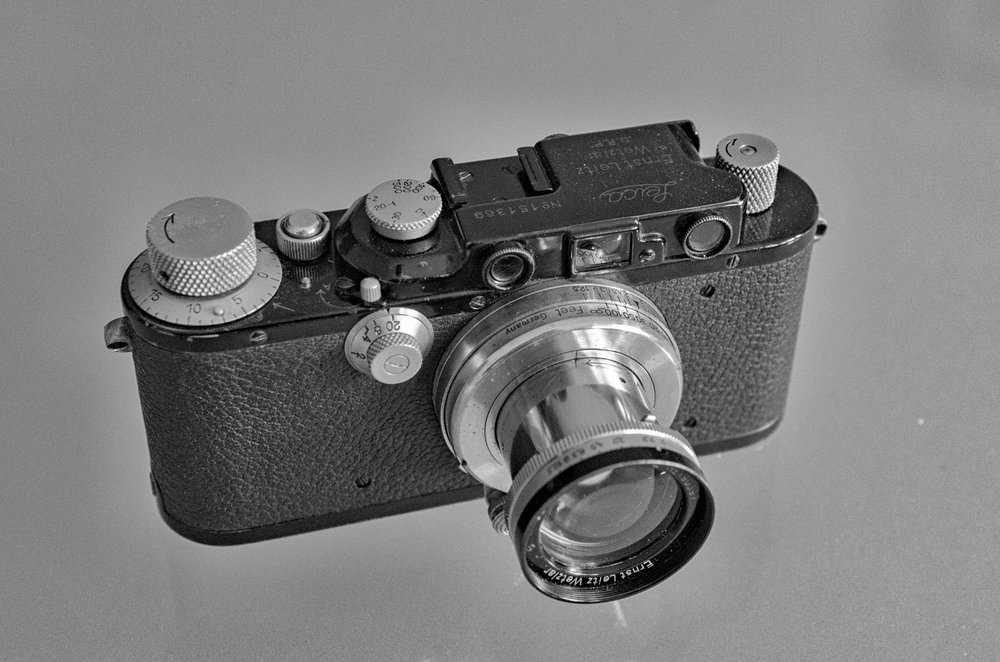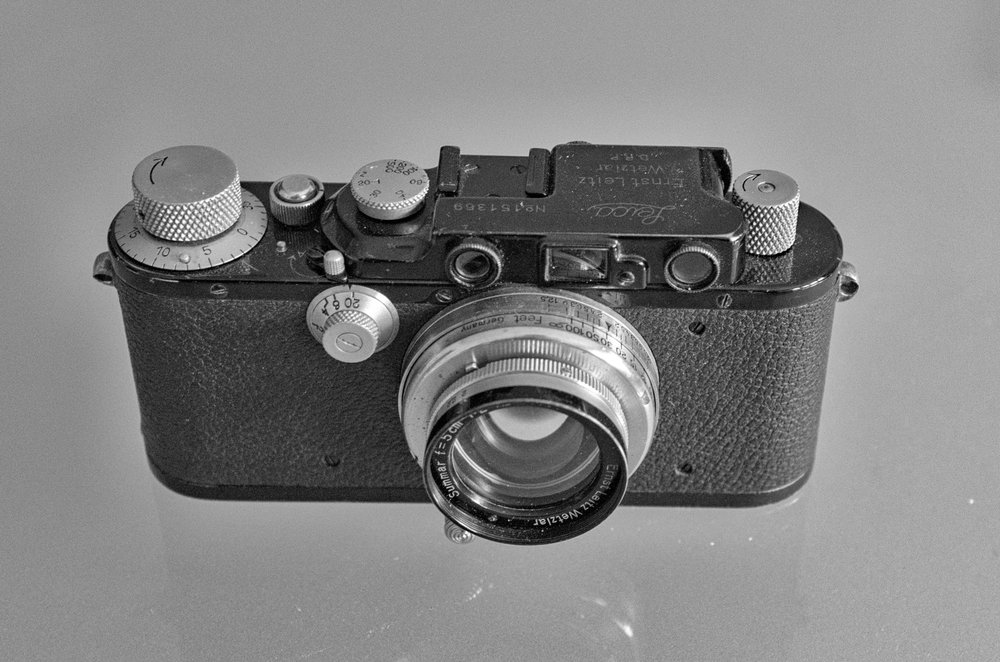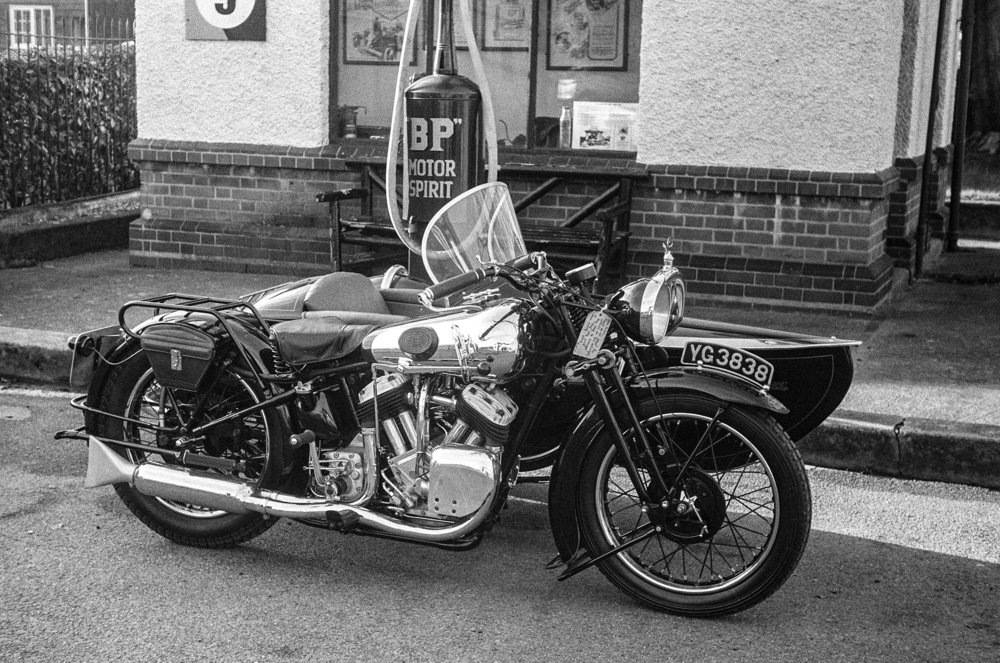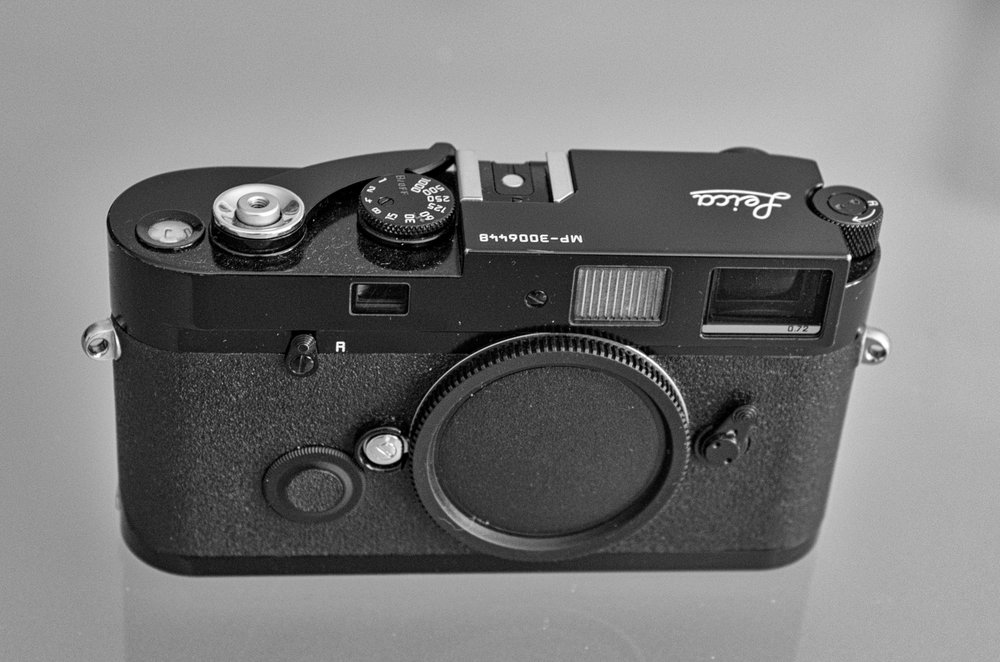
Mike’s mid-1930s Leica III in black paint on nickel together with a contemporary nickel 5cm Summar f/2, a very fast lens for its day. This model with the black rim is a target for collectors. When this camera and lens were produced, however, black paint and nickel was the starter model and the chrome finish cost extra. While a black paint screw-mount camera tends to be more desirable, any premium is modest compared with that for post-1953 black-paint Ms.
What is it about black-paint Leicas? Certainly a lot of fuss. Last December I wrote about the collectibility of black paint cameras and the possibility that the bubble was about to burst Yet there’s an undeniable something that attracts me to black-painted Ms. I love my modern 2004 MP with its obligatory touch of brassing. And I think that the mid-1930s Leica III in nickel with black paint is one of the most beautiful cameras ever made. It is still producing great results and, with its nickel-plated 5cm f/2 Sonnar attached it creates an irresistible image.

The Leica III again, this time with the Summar collapsed to demonstrate how small is the rig overall. In its day this was considered to be camera for “miniature photography” — that is, 35mm or what we now erroneously describe as full frame when it comes to digital sensors.
This obsession with black paint has grown gradually over the past few decades. Black paint (as opposed to the more common black chrome process) cameras now command a hefty premium. A black M3 or one of the few German-made M4s are always in demand. An M4 in black paint will sell for well over £2,000 while a chrome version of the same camera is priced in the hundreds. But beware, black-paint screw-mount cameras, such as the model III featured in this article, are not all that rare and, in fact, are quite common. When it comes to premium prices we are definitely talking about M-mount cameras from the M3 onwards.

Contemporary mid-1930s Brough Superior motorcycle and sidecar snapped by the above Leica III, but with a 5cm Elmar and not the faster Summar
Such is the demand for black Ms that many cameras originally finished in chrome have been repainted black. This is especially the case with M3s where black repros are very common. Some are extremely well done and look great. But while they may desirable, they are not the genuine article and, of course, you should be careful. At the right price you will be pleased, if black is your choice. But don’t pay over the odds because only the original black-paint cameras will command the best prices.
Yet it was not always so. Before the war black-painted cameras were the norm, certainly up to the mid-30s, and were cheaper than cameras finished in the newer, more robust chrome process. Similarly, nickel lenses were cheaper than the new-fangled chrome. The opposite is now the case, with nickel lenses commanding a significant premium. The Summar on the Leica III is a fine example of a nickel lens with the rarer black rim — another factor which can add to value. Originally a second best, for those who couldn’t afford the extra few shillings for chrome, this nickel lens has now become the greater object of desire.

A modern black-paint MP film camera, this one manufactured in 2004 but still current in the catalogue. This is the more desirable MP, rather than the chrome version, and a similar model will sell for about £2,200. Even brassing, where the paint is rubbed as a result of normal wear to reveal the underlying brass (this camera has a little next to the strap lugs) will not be a problem since many collectors like it.
Last December, about the same time as I was writing about the potential pricking of the black-paint bubble, Dutch blogger Johan Niels Kuiper published a comprehensive article including a lot of background on black-paint Leicas and it is well worth a read. You can find his article, “Leica M Black Paint cameras, what’s all the fuss about?” here.

Hi Mike, Good Evening,
Happy New Year!
I have enjoyed reading the articles on here,
I have just bought your Black Leica 3’s close relative, my serial number is 151367. I was alerted to it on Facebook marketplace, it was for sale about 20 miles away, it came with an Elmar lens and an ever ready case and 2 Leica books. The lens looks a bit hazy and the aperture is a bit stiff, on the whole it’s in good condition with a bit of wear to the area around the base edge.
Keep up the good work,
Thank you,
Chris.
Black lacquer and nickel is the nicest finish ever for a Leica. Nothing subsequent to this from Leica comes close. Black paint film Ms and lenses from the 1950s onwards do fetch a premium, but I have always thought that this has more to do with rarity rather than the desirability aspect. The nicest black paint rangefinder I have seen recently was a lever wind Canon from the early 1960s, possibly a Canon P. Chrome or black paint does not affect image quality, of course.
To get back to the real world, Mike, if you ever want to get rid of that nickel with black top Summar, remember it is on my wants list. If I come across another somewhere I will probably buy it, though.
William
Yes, first dibs for you, William. I’m not thinking of selling just yet…..